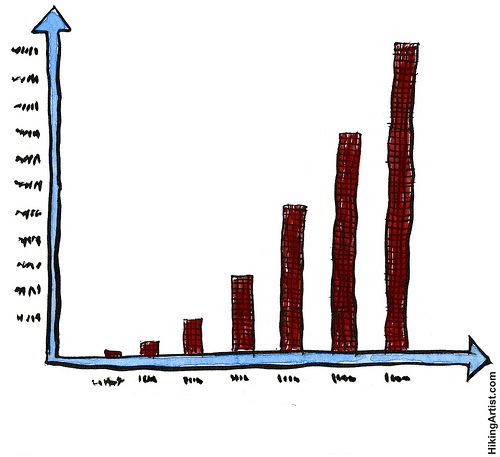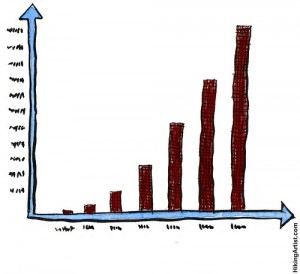
Self-Publishing Statistics – Who are the Top Earners?
 Self-Publishing Statistics – Who are the Top Earners?
Self-Publishing Statistics – Who are the Top Earners?
By Patricia de Hemricourt
Continued from Self-Publishing Statistics: Women fare better than men at making money from self-publishing
So what are the factors that make the difference between the Top Earners (the respondents who said they could live off their royalties) and the others?
- Two third of the Top Earners are women, so success in self-publishing is definitely not gender neutral.
- The average Top Earner spent 69% more time writing than the average author outside of the Top Earners group. They write on average a third more words than their non-Top Earning counterparts, but they also spend an average of 24% more time on those words.
- Respondents who’d had their work rejected by traditional publishing and then opted to self-publish it were among the lowest earners.
Rejection isn’t all bad though. 32% of the “Top Earners” tried and failed to get a traditional publishing deal before self-publishing, but now make a living from selling their work. - Self-publishing authors who went straight to publication without submitting their work to traditional publishers earned 2.5 times more than those who submitted it and got rejected.
- 29% of the Top Earners have an agent, compared to 10%. Having an agent was correlated with earnings more than three times higher than unrepresented respondents.
- Respondents who paid professionals for services like story-editing, copyediting and proofreading earned on average 13% more than those who didn’t. Hiring a professional cover designer earned them on average 18% more. Yet, not all paid-for services translate into a significant increase in earnings. Self-publishers who hired professional e-book formatters only saw average earnings of 1% more.
- The Top Earners group spent more time writing than they did marketing, and those in the group who spent the least time marketing were making the most money. Out of all respondents, those who spent the most time marketing earned the least.
- Top Earners had almost four times as many reviews for their most recent book than authors outside of the group, and those books were earning those Top Earners six times as much revenue for those who reported the figures for their second most recent book, the Top Earners still had about the same amount of reviews but the revenue gap rose to fourteen times the income of other author’s second most recent books, which had been on the market for about 14 months. (Read here for tips and tool about finding Amazon Book Reviewers who provide their contact details)
Another factor that seemed to improve the earning power of a self-published author is to make a book trailer. Romance writers also did better than science-fiction, fantasy or literary fiction writers, which might partly explain the high proportion of women in the Top Earners.
Yet, the most effective single tactic, submitting to popular reviewers on Amazon, was the least used. Authors who used this strategy received 25% more reviews than average, and more importantly, 32% more revenue for their latest release.
So, time to get cracking in getting reviews 🙂
These statistics come from Taleist Survey